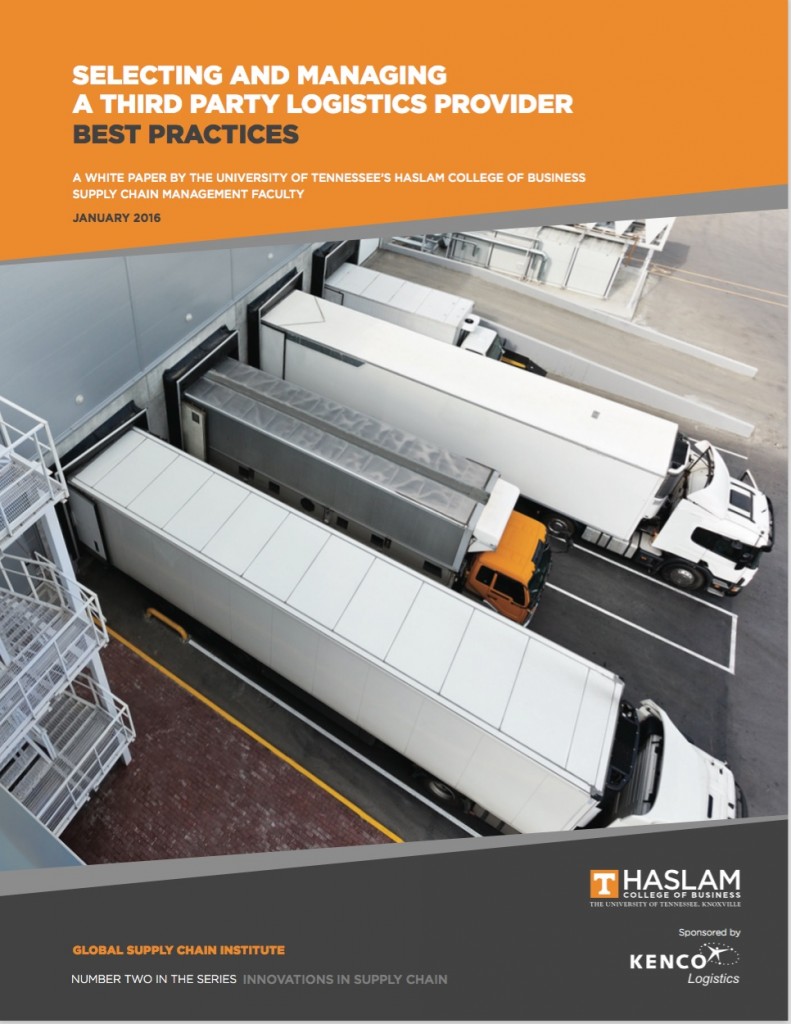One of our most popular Talking Logistics episodes of all time is Important Factors to Consider When Evaluating and Selecting a Third-Party Logistics (3PL) Partner (6,220 views to date), which we summarized in a follow-up post and also included in our first Talking Logistics YOUniversity course, Fundamentals of Selecting and Working with 3PL Partners.
 Simply put, this topic is near and dear to my research heart, so when I received a copy of Selecting and Managing a Third Party Logistics Provider Best Practices — a new white paper by J. Paul Dittman, PhD and Kate Vitasek from the University of Tennessee’s Haslam College of Business — I couldn’t wait to read it.
Simply put, this topic is near and dear to my research heart, so when I received a copy of Selecting and Managing a Third Party Logistics Provider Best Practices — a new white paper by J. Paul Dittman, PhD and Kate Vitasek from the University of Tennessee’s Haslam College of Business — I couldn’t wait to read it.
Here’s my one-sentence review: If you’re getting ready to select a 3PL partner for the first time, or want to improve the way you currently select and manage your 3PLs, this paper is a must read and helpful resource.
I encourage you to download and read the paper, which was sponsored by Kenco Logistics, for all the insights and recommendations, but here are a couple of nuggets that caught my attention.
First, what is the biggest mistake companies make during the 3PL selection process?
Executives we interviewed said that the biggest mistake they made was not doing a thorough needs assessment before hiring a 3PL, which led in many cases to significant costs and missed opportunities later.
This echoes what I hear repeatedly from 3PL executives. They often receive request for proposals (RFPs) or participate in meetings with prospective clients where it’s clear — by the vagueness of the RFP or by the questions they ask (or don’t ask) — that the client doesn’t fully understand what they need or what they want to achieve. Like the great Yogi Berra said, “If you don’t know where you’re going, you might not get there” — which is why many 3PLs, when they see this red flag, walk away from these opportunities.
Dittman and Vitasek provide this advice:
A good way to start this [needs assessment] process is to go back to the 3PL activities that we listed [earlier in the paper], and ask yourself which of these services you need now or will need in the future. For example, do you need special DC services like kitting? Will you need IT services? Will you need last-mile capability?
Next document the as-is situation and your vision of the to-be process. Do your homework, and evaluate the forces affecting the market, like capacity (e.g. capacity limitations in over-the-road domestic but continued overcapacity in ocean freight) and new disruptive technologies, which we’ll discuss later.
Finally document your goals in areas such as cost, service, and new business expansion, and use those factors in considering your 3PL partner.
Simply put, if you jump straight to the RFP without doing a thorough needs assessment, you’re setting yourself up for failure.
And depending on your specific needs, submitting a Request for Proposal might not be the best course of action, which brings me to the second nugget from the paper: a Request for Proposal is only one of four types of proposals companies can submit to 3PLs depending on their specific needs. The other three are Request for Quote (RFQ), Request for Proposed Solution (RFPS), and my personal favorite, Request for Partner (RFP), which Kate Vitasek wrote about in a Talking Logistics guest commentary back in August 2014.
The bottom line is that there are no guarantees that a 3PL-customer relationship will be successful, but you can maximize the odds for success by not repeating the same mistakes others have made. There are plenty of resources available documenting leading practices in selecting and managing 3PLs, including our online course and this white paper by Dittman and Vitasek. Make the time to read, watch, and discuss the content of these educational resources before beginning your 3PL selection journey. Not doing your homework upfront might actually be the first big mistake you make when selecting a 3PL.










